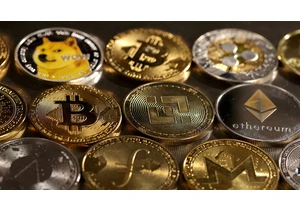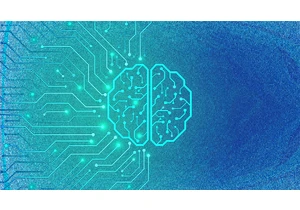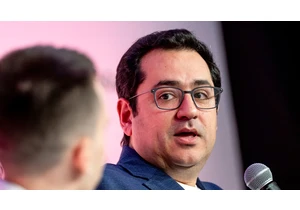Wars have unintended consequences, and positive results can emerge from tragedy. For proof, just look at the list from NATO of some unexpected outcomes of R&D that led to society-changing benefits.
This NATO list explains where cargo pants came from, but rather than head down the rabbit hole, let’s focus on the American Education Act, which was established back in 1921. The World War I draft revealed that 25% of draftees were illiterate; shocked by that, the National Education Association and the American Legion pushed for the act to generate public support for education.
Flash forward more than 100 years, and we have the crisis of STEM illiteracy to deal with. And once again, to put a spotlight on the problem, and create a movement for tackling it, a visionary 21st century group of concerned parties have come together to advocate for a National STEM Week.
While the participants represent a broad swatch of the STEM community, every movement needs a spark or catalyzing agent; Jenny Buccos, founder of EXPLR, as exactly that. EXPLR is a nonprofit whose mission is to empower students with the practical skills and experiences they need to win in school and life.
As president and CEO of the Center of Science and Industry (COSI) and a boardmember of the National Academy of Sciences, Engineering and Medicine, I am honored to join Buccos and more than 100 other organizations in advocating for Congress to establish a National STEM Week. The bill, which was co-sponsored by Ohio Reps. Mike Carey and Joyce Beatty has a mission is to promote American innovation and enhance STEM education pathways for all students.
Let me emphasize all. That includes those in rural, urban, and underserved communities who are under-performing their peers who regularly benefit from better funded school districts with smaller classes. Genius knows no race, gender, religion, or socioeconomic status. The capacity for children to explore their imagination and harness their potential must never be limited by the size of the classroom to which they are assigned or school resources available to them.
National STEM Week will work on multiple levels; an integration of efforts is necessary to change course. These initiatives will including active advocacy of STEM education at all educational levels. They will showcase diverse career pathways; encourage family engagement; facilitate partnerships between educational institutions and industry leaders; and support states and local communities in developing and promoting their own STEM Week activities and resources.
Sadly, there is no shortage of statistics that demonstrate the need for these efforts. Here are some I pulled out of my high-anxiety folder for you:
- The National Assessment of Educational Progress found only 41% of fourth grade students and 21% of twelfth grade students could be considered “proficient” in math, while 38% of fourth grade students and 22% of twelfth grade students could be considered “proficient” in science.
- Differentiating the data by race, and the picture gets even more grim. According to this National Assessment of Educational Progress, 33% of white students scored at or above the proficient level in math, compared with 6-12% of Black, Hispanic, or American Indian/Alaska Native students.
These STEM scores are why American students consistently under-perform against their peers in many developed nations, which poses a deepening skills gap that threatens the country’s standing in the global economy.
What is more, the explosion of AI makes our under-education even more of a global vulnerability; if our work force is ill-equipped for the STEM world of the moment, we will be even more vulnerable to the STEM world of the future.
As a science educator, I am immensely troubled by the consequences of America’s failing STEM grades. We cannot kick the can down the road, the problem is now. A recent report by the National Association of Manufacturers depressingly revealed that a whopping 77% of manufacturers say they will have ongoing difficulties in attracting and retaining workers, in large part due to a growing skills gap.
Investing in manufacturing and technology—like Intel is doing in New Albany, Ohio, where 3,000 STEM jobs are being created over the next three-to-five years—is essential for America’s economic success. But if the skills gap persists, the challenge will be only half met.
We must invest in manufacturing and education.
I traveled to Washington, D.C. earlier this year to encourage members of Congress to establish National Stem Week as a lightning rod to engage all Americans. This aligns with our mission at COSI: that science, technology, engineering and must not confined to a laboratory or a classroom—but must enter the fabric of our daily lives.
I am not naïve. I understand that a single week of STEM focus is not enough to reverse many decades of neglect and failed policy. However, as a scientist myself, I do follow data and trends, and given the extent to which economic competitiveness and innovative capacity of the United States relies on a STEM-ready workforce, we must keep pushing in every direction.
More than 100 years ago, the American Education Act was passed because the nation was shocked by an illiteracy rate of 25%. I regret to report to you that more than 100 years later, 21% of Americans still have “low literacy skills” and 54% have literacy below the sixth-grade level. We cannot improve our STEM education without in parallel fixing our basic education.
Sure, it is a difficult and multidimensional problem to solve. But so is propelling a human from our beautiful orb and safely landing them on the moon. We have successfully accomplished this super-complex feat decades ago, and excitingly, we are going back soon with NASA’s Artemis Program.
If we can put humans on the moon and seriously consider landing us on Mars, let us take our great collective cognitive capacity and commensurate problem solving skills and apply them to education in general—and STEM education for all—right here at home.
It is a daunting challenge to be sure, but with global competition breathing down our necks, we simply cannot wait another 100 years.
Ak chcete pridať komentár, prihláste sa
Ostatné príspevky v tejto skupine

Even if you’re a regular Alexa user, there’s a good chance you haven’t discovered some of its most efficient features.
Actually, strike that: There’s a good chance you’

The Fast Company Impact Council is a private membership community of influential leaders, experts, executives, and entrepreneurs who share their insights with our audience. Members pay annual

Cryptocurrency exchange Bybit said last week hackers had stolen digital tokens worth around $1.5 billion, in what researchers called the biggest crypto heist of all time.
Bybit CEO Ben Z


Anthropic released on Monday its Claude 3.7 Sonnet model, which it says returns results faster and can show the user the “chain of thought” it follows to reach an answer. This latest model also po

This morning, Apple announced its largest spend commitment to da

